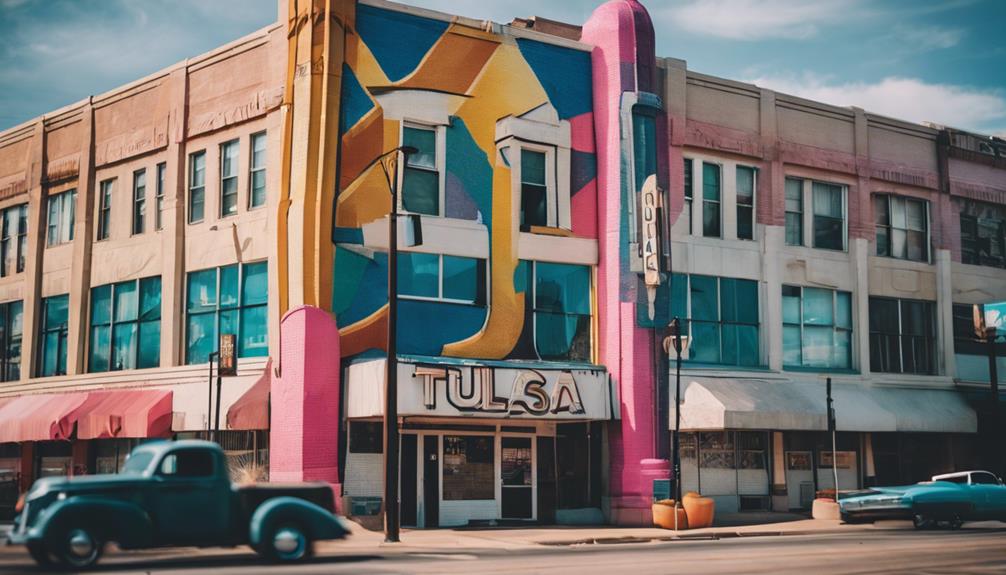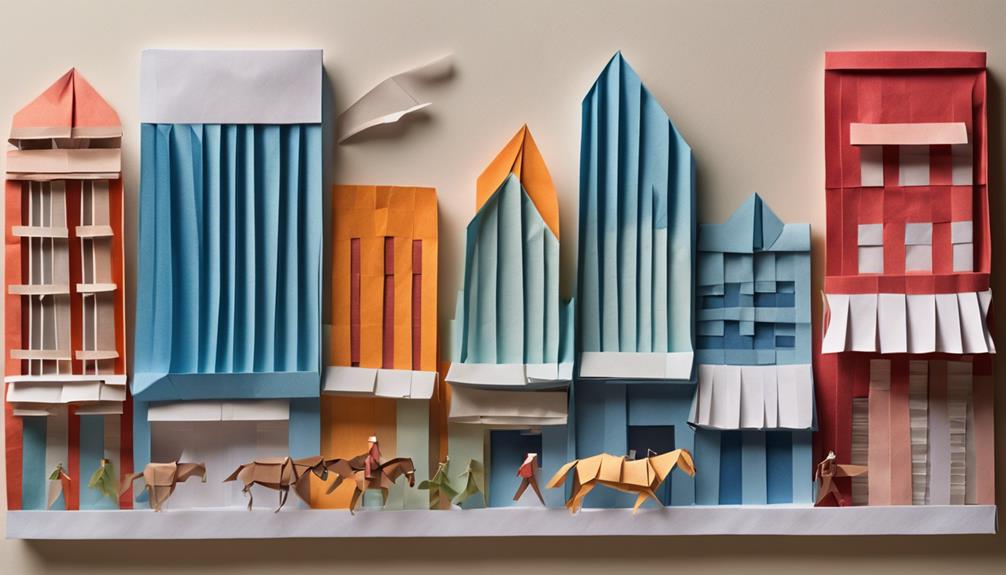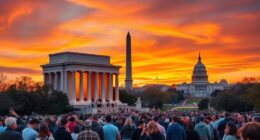Immerse yourself in Tulsa's vibrant cultural tapestry with its rich Art Deco gems like the iconic Will Rogers High School, Philcade, and Boston Avenue United Methodist Church. Tulsa's Art Deco style from the 1920s and 1930s boasts geometric shapes and a fusion of modern and traditional elements, reflecting the oil boom's influence. Explore the striking Deco District featuring historical buildings such as the Philcade and Philtower, showcasing intricate architecture blending history and modernity. Tulsa's engaging urban landscape narrates a rich history with a harmonious mix of Art Deco and contemporary structures, promising a unique architectural journey through time.
Key Takeaways
- Tulsa showcases iconic Art Deco gems like Will Rogers High School and Philcade.
- The Deco District features stunning Art Deco buildings blending modern and traditional elements.
- Visitors can explore Tulsa's architectural heritage through Philcade and Philtower.
- Tulsa's skyline boasts a mix of Art Deco structures and modern skyscrapers.
- Immerse in Tulsa's rich history by strolling through trendy districts with historical landmarks.
Art Deco Architectural Marvels
Explore Tulsa's Art Deco architectural marvels, featuring iconic buildings such as Will Rogers High School, Philcade, and Boston Avenue United Methodist Church. The Art Deco style in Tulsa, characterized by geometric shapes and a blend of modern and traditional design elements, flourished during the 1920s and 1930s, leaving a lasting impact on the city's architectural landscape.
Tulsa's Art Deco buildings reflect the city's rich history as the Oil Capital of the World, showcasing a hub of architectural innovation. Boston Avenue United Methodist Church stands out as an exceptional example of Art Deco design in Tulsa, with its intricate terra-cotta sculptures and sharp-edged geometric patterns.
These architectural gems not only serve as visual delights but also offer a glimpse into the city's unique architectural legacy, highlighting the creativity and craftsmanship of the era. The oil boom in Tulsa played a significant role in the development of these stunning structures, contributing to the city's reputation as a center of architectural excellence.
Exploring Tulsa's Trendy Districts
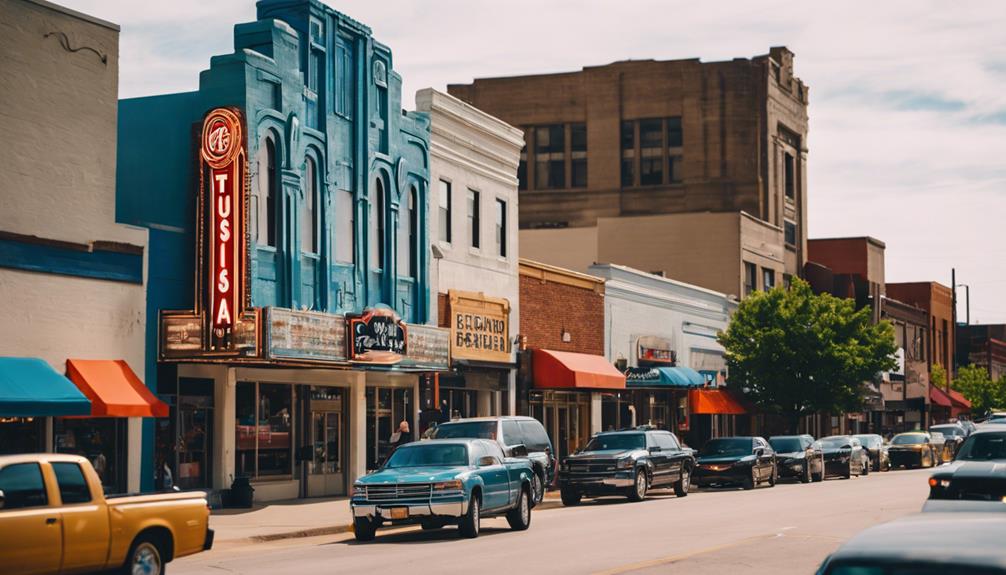
Discover Tulsa's trendy districts, showcasing a vibrant mix of architectural styles and cultural influences. The Deco District stands out as a must-visit area, known for its striking Art Deco buildings that contribute to the unique charm of the Tulsa skyline. This district is home to iconic landmarks like the Philcade and Philtower buildings, which not only add to the architectural diversity of the area but also hold significant historical value. By wandering through the Deco District, visitors can immerse themselves in the historical significance of Tulsa's architectural heritage, where traditional and contemporary designs coexist harmoniously.
Below is a glimpse of what Tulsa's trendy districts have to offer:
| Landmark | Description | Importance |
|---|---|---|
| Philcade Building | A prime example of Art Deco architecture in Tulsa, showcasing intricate details and historical significance | Historical significance |
| Philtower Building | Another iconic structure in the Deco District, blending Art Deco style with modern elements | Architectural diversity |
| Tulsa Skyline | Admire the unique silhouette created by the mix of Art Deco buildings and modern skyscrapers | Cultural influences |
Exploring these areas allows visitors to appreciate Tulsa's rich cultural tapestry and architectural evolution.
Historical Landmarks in Tulsa
Boston Avenue United Methodist Church, an iconic Art Deco gem in Tulsa, stands as a tribute to the city's architectural heritage with its intricate geometric patterns and lavish ornamentation. When exploring the historical landmarks in Tulsa, you'll find a blend of rich history and stunning architectural design.
Here are some key points to ponder:
- Oil Discoveries Along the Arkansas River: Tulsa's history is deeply rooted in the oil industry, and the discovery of oil along the Arkansas River in the early 20th century played a significant role in shaping the city's development.
- Intricate Plaster Work: The Boston Avenue United Methodist Church is known for its intricate plaster work, reminiscent of the craftsmanship seen in a Native American blanket, showcasing the attention to detail prevalent in Art Deco architecture.
- Architectural Legacy: Tulsa's Art Deco buildings not only reflect the city's history but also serve as a tribute to its artistic and architectural heritage, attracting admirers from far and wide.
- Blend of Modernity and Tradition: The fusion of modern design elements with traditional motifs in Tulsa's historical landmarks creates a unique and alluring architectural landscape that highlights the city's vibrant past.
Fusion of Past and Present
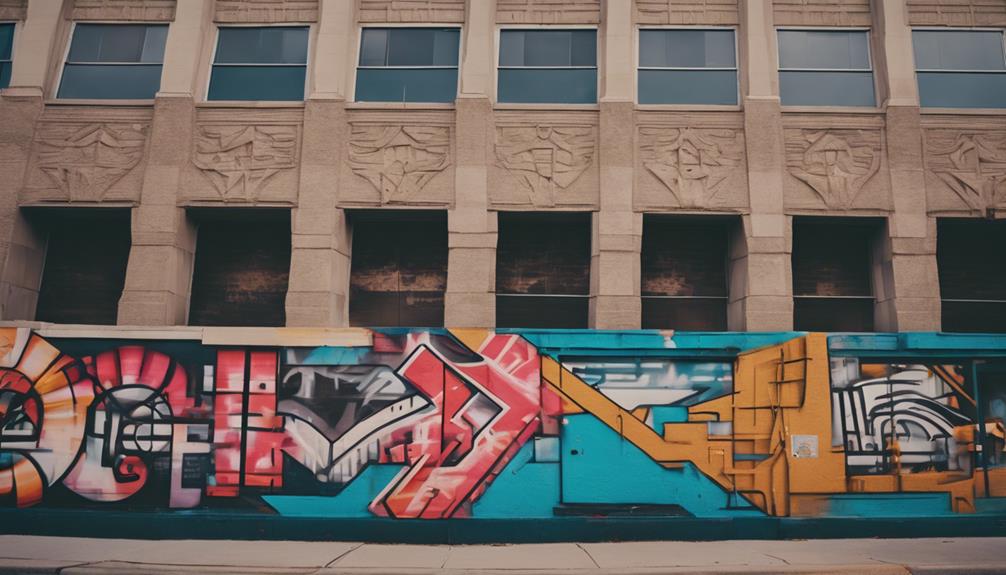
Tulsa's seamless blend of historic charm with modern trends in its Art Deco architecture creates a compelling fusion of past and present, evident in both its iconic landmarks and trendy districts. The city's architectural landscape reflects a harmonious coexistence of traditional Art Deco elements and innovative design concepts, showcasing the evolution of design trends in the United States. Visitors can explore Tulsa's trendy districts to witness the interplay between historic preservation and modern revitalization, offering a vibrant cultural experience shaped by the city's rich heritage.
| Art Deco | United States |
|---|---|
| oil discoveries along | design elements |
| trendy districts | historic preservation |
Captivating Urban Landscape

Immerse yourself in the mesmerizing Art Deco gems that embellish Tulsa's architectural skyline to enrich your exploration of the city's urban landscape.
Here are four enchanting aspects of Tulsa's Art Deco urban landscape:
- Boston Avenue United Methodist Church: This iconic landmark stands as a prime example of Tulsa's Art Deco architecture, boasting intricate geometric shapes and lavish ornamentation that reflect the city's historical charm.
- Blend of Geometric Shapes: Tulsa's urban landscape showcases a harmonious blend of geometric shapes, a hallmark of Art Deco design, creating a visually stunning environment for visitors to admire.
- Rich Architectural Legacy: The array of incredible Art Deco buildings in Tulsa narrates a story of the city's rich history and architectural legacy, offering a glimpse into the past while adding to the city's aesthetic allure.
- Lasting Aesthetic Impact: The flourishing of Art Deco architecture in the 1920s and 1930s left a lasting impact on Tulsa's aesthetic charm, drawing visitors and photographers to marvel at the intricate details and historical significance of these buildings.
Frequently Asked Questions
Where Can Art Deco Architecture Be Found in Tulsa?
Art Deco architecture in Tulsa can be found in iconic buildings like the Philcade, Boston Avenue United Methodist Church, and Union Depot. This architectural style showcases geometric shapes, lavish ornamentation, and a fusion of modernity with tradition.
Influential during the 1920s and 1930s, Tulsa's Art Deco buildings reflect its history as the Oil Capital of the World.
Exploring these structures offers a glimpse into the city's avant-garde design sensibilities and rich cultural heritage.
Why Is There so Much Art Deco in Tulsa?
Tulsa boasts an abundance of Art Deco architecture due to the city's construction boom in the early 20th century. Architects flocked to the Oil Capital of the World, infusing their designs with the avant-garde Art Deco style.
This fusion of modernity and tradition shaped Tulsa's identity as a hub of Art Deco architecture, reflecting a unique blend of design and culture that continues to be appreciated today.
What Is the Richest Suburb of Tulsa?
Jenks is widely recognized as the richest suburb of Tulsa, boasting a significantly high median household income that surpasses the national average.
This affluent community appeals to residents seeking a superior quality of life, with top-rated schools, upscale shopping centers, and a thriving economy contributing to its desirability.
The suburb's well-maintained properties and upscale lifestyle solidify Jenks as a sought-after residential area within the Tulsa region.
Where Is Art Deco Most Popular?
In cities with significant Art Deco influence, like Tulsa, this iconic architectural style is most popular. The 1920s and 1930s saw a flourishing of the Art Deco movement, shaping numerous buildings worldwide.
Tulsa's vibrant architectural scene uniquely blends Art Deco elements with local culture, creating a visually striking cityscape. Visitors can immerse themselves in the beauty of Art Deco design by exploring the city's diverse collection of iconic buildings and landmarks.
Conclusion
To sum up, Tulsa's vibrant art deco gems and trendy districts offer an enthralling blend of past and present for visitors to explore.
With historical landmarks, architectural marvels, and a fusion of cultures, the city's urban landscape is truly a sight to behold.
So next time you find yourself in Tulsa, be sure to take a stroll through its streets and immerse yourself in the rich history and trendy vibes that make this city so unique.
Remember, Tulsa isn't just a city, it's a time machine waiting to be discovered.

